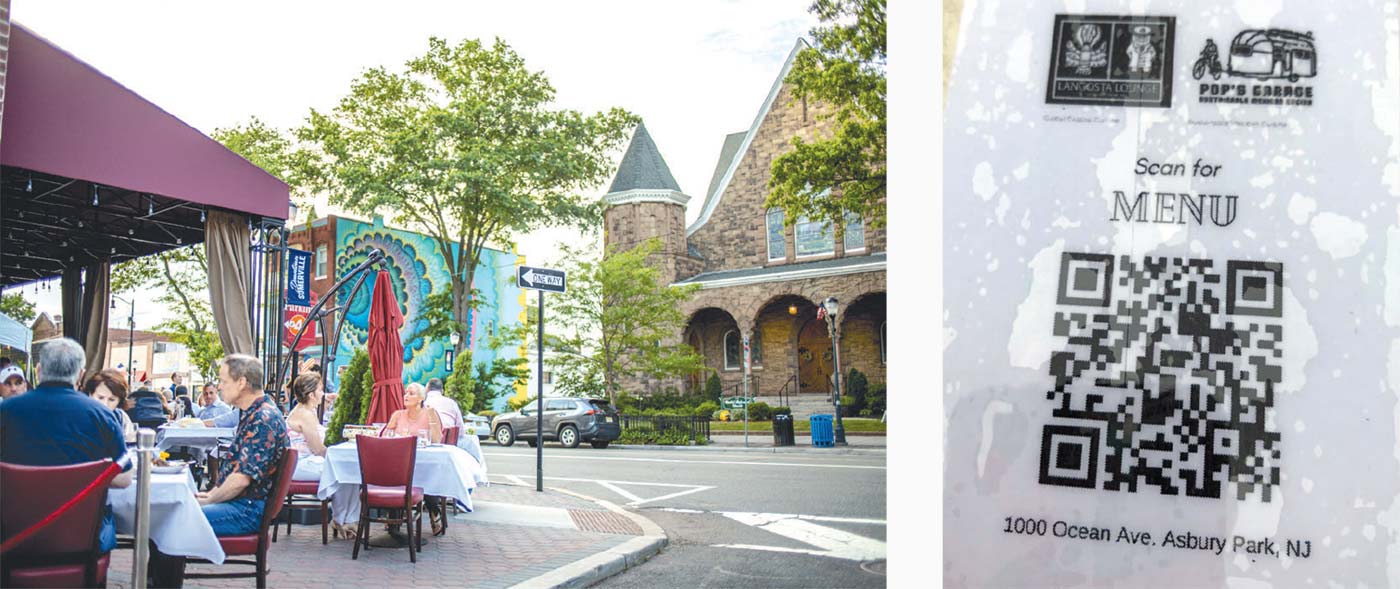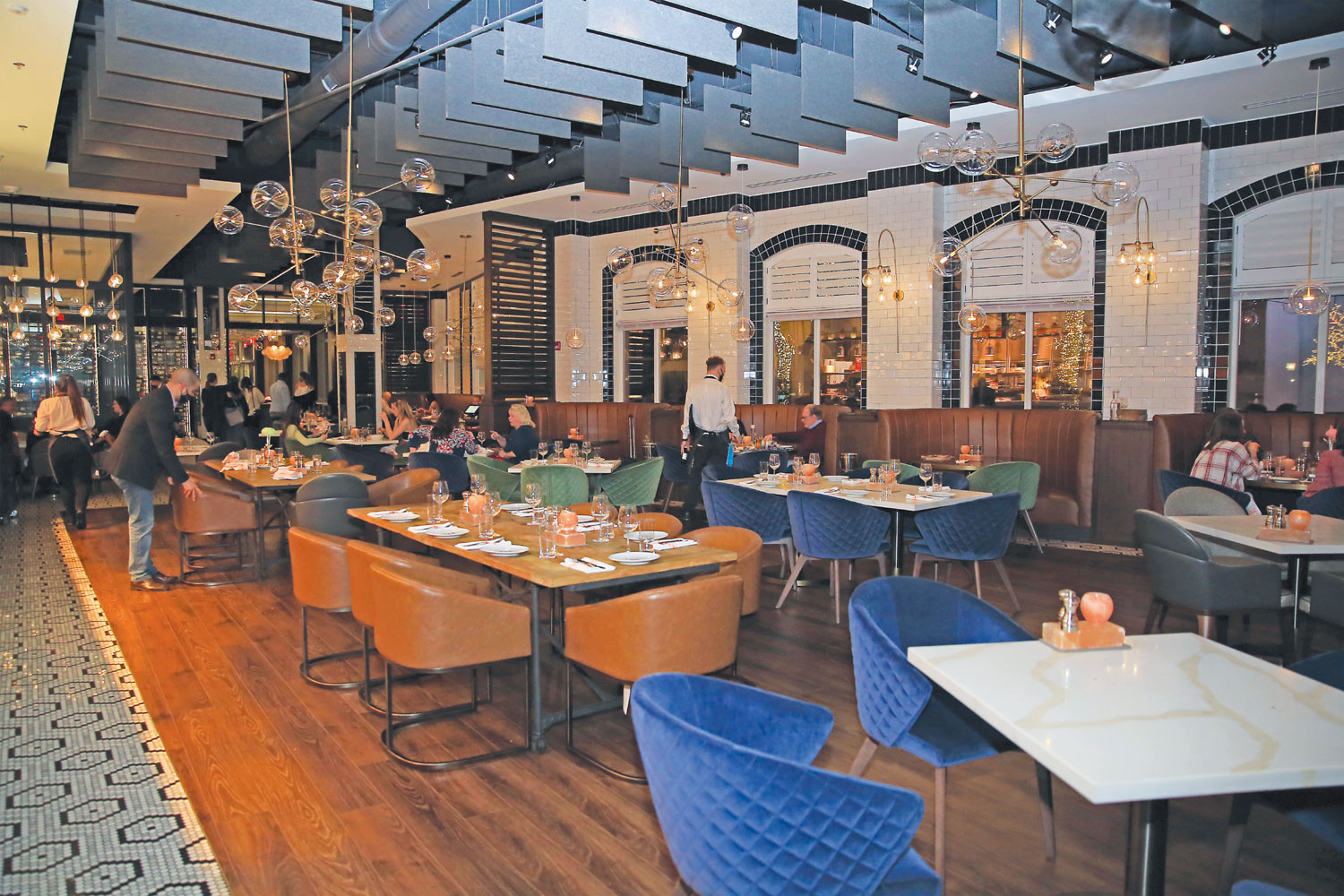Restaurateurs are Coming to Terms with their Post Covid-19 Reality
Almost two years after Covid-19 nearly shattered the industry, restaurateurs are coming to terms with their new reality.
In March 2020, what should have been a season of awakening after a long winter quickly devolved into a life-changing global shift: The world found itself in the throes of the Covid-19 pandemic. As Americans were forced to adapt to remote work schedules, homeschooling, and social distancing, the hospitality industry faced an onerous challenge: remaining afloat in a world where nobody wanted to be in public.
Now the pandemic is approaching its two-year mark. But even with vaccinations on the rise, and many states’ capacity limits fully expunged, the National Restaurant Association reported in August* that the restaurant industry’s 2021 revenue still remains an estimated $110 billion shy of the initially predicted 2020 (pre-Covid) numbers—and that’s after seeing a nearly 20% increase in 2021 sales compared to 2020. Staffing shortages and higher costs have created unpredictably low margins. For an industry in transition, alternative business models, such as enhanced takeout and delivery, and new technology, including digital menus, have also required additional investment—in hopes of increased revenue.
For restaurateurs, the uncertainty begs one question: Where to from here?
SHOCK & AWE
“It was just shock and devastation,” says Nicole Piazza, who owns The Clean Plate Kitchen in Clinton alongside her husband, Anthony. “Beyond that, we went immediately into survival mode.” Many restaurants quickly pivoted to takeout. But for Piazza, who owns an eatery that only offered a sit-down experience, it wasn’t so easy to change course.
“We’re more of a destination location, so shifting gears and reinventing ourselves as a solely takeout restaurant was a very big shift.”
Thirty miles away, Chris Cannon, owner of Morristown’s Jockey Hollow Bar and Kitchen, skipped the takeout transition altogether. For him, the pandemic led to a total shutdown.
“I was in Bologna [Italy] in February,” Cannon recalls, “and we were watching my sales drop in half every two days.” For Cannon, there was no other option but to temporarily close Jockey Hollow’s doors. “We just said, ‘That’s it, we’re going to shut down.’”
While many restaurants continued working to make ends meet with takeout or home delivery services, some were in locations that didn’t allow for those types of transition. And for restaurateurs who owned several spaces, each establishment held different potential—and different challenges to overcome.
“For us in Long Branch, nobody knows we’re here—there’s not a lot of real estate around us,” says Chef Marilyn Schlossbach, owner of The Marilyn Schlossbach Group, referring to her The Whitechapel Projects. Logistics were also daunting in her more established restaurants such as Asbury Park’s Langosta Lounge. “Asbury was very challenging because we had no ability to do any outside dining in bad weather.”
Rather, Schlossbach worked with local politicians to provide food for places in need. She and her team prepared meals for food banks, senior centers, and schools as a means of creating profit while helping others. Initially, the program was funded by nonprofits and private donations; down the road, it received grant funding.
“Without these food bank programs, we wouldn’t be here today,” Schlossbach says. “100 percent, we’d be out of business.”
Chef and restaurateur David Burke, who owns numerous restaurants from New Jersey to Saudi Arabia, viewed the pandemic a bit differently. Having built up a worldwide business, Burke took the lull as an opportunity to grow. Though he was admittedly feeling fear and concern in March 2020, he hit the ground running with his expansion.
“I think there was some disbelief [in March]. I’m very optimistic … but it continued and kept dripping on,” Burke says of those first months. He launched several New Jersey spaces since the pandemic’s start, including East Brunswick’s Orchard Park and Morristown’s 1776 On The Green. “There was really high adrenaline, and we were taking chances. And sometimes you win, and sometimes you don’t.”

(L TO R) – LANGOSTA LOUNGE ON THE BOARDWALK, ASBURY PARK (N. PAINTER), NICOLE PIAZZA OF CLEAN PLATE KITCHEN (COURTESY OF N PIAZZA), THE WINDLASS, LAKE HOPATCONG (N. PAINTER), DOWNTOWN SUMMIT (N. PAINTER).
CRISIS AND CREATIVITY: STAFFING
Restaurant owners throughout New Jersey have each handled the crisis differently. But as of May 2021, New Jersey removed all mask mandates, and restaurants were back up to full capacity, both indoor and outdoor. Outside looking in, it appeared the worst was over for the hospitality industry. But Covid-19’s surge continues, with the possibility of new variants creating additional uncertainty and scientists saying there is still a long way to go.
Many businesses remain understaffed; according to the National Restaurant Association, eating and drinking establishments were still nearly 1 million jobs below pre-pandemic levels as of August 2021.
The difficulty in finding service workers has forced business owners to offer higher wages, full-time benefits, and more to build trust and retain employees. Paired with rising costs, eateries are now operating on thinner-than-ever margins. And staffing shortages lie at the forefront of those complications. For the road ahead, it means rebuilding in a way that puts employees first—and finding those willing to stay.
“In the next phase of our industry, we have to be prepared to train an entirely new, young, uneducated workforce,” Schlossbach says. “The people that were here two years ago are gone. If they haven’t come back, they’re not.”
Many owners have pivoted to hiring those with less experience—they’re taking anyone who is willing to work, despite that it requires additional patience and training.
“We rarely used to hire people too inexperienced,” Nicole Piazza says. “Now, the majority of staff is under 18.” Piazza added that the change in the workforce resulted in shifting The Clean Plate Kitchen’s business model, including using technology that allows customers to order and pay at the tables, simplifying the traditional table service. “We have to let the staff do the job in an easier way.”
As the pandemic seemingly starts to slow in New Jersey, business owners are recognizing that rebuilding a team of long-term staff is paramount.
“We realized we need to pay our managers and chefs top dollar to keep the good ones, because turnover is a real issue,” David Burke says. “If I’m going to expand, I’m going to pay a little better and make a little less, so I can sleep at night knowing the people running my business I can trust and are there to stay.”
“THAT WAS ONE OF THE GREATEST THINGS TO LEARN FROM THE PANDEMIC: SLOW DOWN AND TAKE A LOOK AROUND.”
RE-THINKING THE MATH: MANAGING COSTS
In addition to reestablishing a solid team, restaurateurs must tackle other problems of equal importance: battling the rising cost of goods without letting it fall to the consumer, while simultaneously reeling customers back in. Chris Cannon, who has owned five restaurants in New York City, likened the aftermath of the pandemic to the weeks that followed September 11, 2001—another time of great uncertainty when people were apprehensive about stepping out.
“After September 11, everyone in New York was freaking out,” Cannon recalls. “That October, we did the same thing: battened down the hatches, cut menus … It was emergency time.”
“It’s the same thing now. Revenue is cut, cut the hours, figure out how to operate more profitably. Sharpening the knife, and cutting this and that, without sacrificing quality.”
For Schlossbach, popular ingredients such as sesame oil and lobster have doubled—or even tripled—in price over the past year. Picked lobster, which is caught and cleaned, was up from $21 per pound last summer to $60 per pound this year.
“I can’t pass that on to the consumer,” Schlossbach says. “The best we can do is try and mitigate any overspending on anything and control the hours based on the labor we have.”
Schlossbach adds that her restaurants are closed more than they ever have been, but the inability to operate all seven days has led her to a realization. “I don’t know that I want to go back to that seven days a week,” she says. “So that we all have a day where we don’t have restaurant life.”
“WE HAVE TO LET THE STAFF DO THE JOB IN AN EASIER WAY.”

PHOTO: COURTESY OF DOWNTOWN SOMERVILLE
A NEW VIEW: BUILDING A BETTER FUTURE
The pandemic has created lasting effects on the industry, and while the overall outlook remains optimistic, restaurant owners likely won’t find success without shifting their business models.
For Piazza and The Clean Plate Kitchen, that meant transitioning from only a dining establishment to also a meal preparation business, which evolved out of the circumstances. Piazza plans to purchase a new space and put in a new kitchen to expand the business.
“We really believe in what we’re doing,” she says, adding that the “excitement” of a new venture will help her and her husband regain their footing. “Being able to change our menus weekly, be more creative, and learn a different way of cooking—it’s less staff, a smaller operation. We’re hoping we can stir back up that joy.”
Flexibility and creativity remain key. Market Pizza in Stockton launched an aggressive marketing campaign at the start of the pandemic, and plans to continue it. The initiative’s print and online advertising as well as newsletters and social media keep new and existing customers apprised as to hours and menu options. “[It] resulted in maintaining a solid stream of business during the pandemic,” says owner Megan Jones-Holt, “and put us in position for solid growth moving forward.”
For Cannon, growing means, in part, being one of the few New Jersey restaurants to institute a vaccine mandate. And he believes that could be what sets Jockey Hollow apart from other Morristown spots this winter.
“Going into this winter, people will see us as a safe option,” Cannon says. “Last year, we lost the entire Christmas season. This Christmas season, we’ll still be here.”
Meanwhile, Burke’s big-city path is changing in favor of smaller, more suburban areas—bringing him to places like Morristown.
“We’re going into the fast-casual sector, too, with a pizza concept,” Burke says. “We’re heading away from the big cities and more into the suburban markets around the big cities. … But mostly, I want to stay in Jersey.” Despite worldwide business ventures, Burke calls New Jersey home, and he plans to keep expanding closer to his roots—and stay closer to home.
“Life goes by, then you’re going to just retire in Jersey? No way. That was one of the greatest things to learn from the pandemic: Slow down and take a look around.”
For Schlossbach, returning to a pre-pandemic state isn’t an option. Rather, she is moving forward with a new outlook on the situation: Bring back something even better.
“We’ve still got a few really long years ahead of us to level off the financial repercussions of what’s happened,” Schlossbach says. “I am willing to tweak my concept, tweak how we bring income in … and be open to build a community of change. This is an opportunity to basically wipe out whatever and build it back.”
“We have to have optimism; we have to have kindness,” she adds. “If we let go of all of those things, what’s left?”
* “State of the Restaurant Industry: Mid-Year Report,” National Restaurant Association, August 2021.





